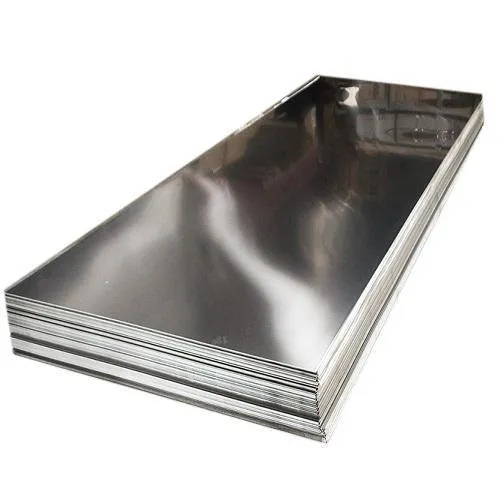J H Stainless is India's leading Stockist & Suppliers of Mild Steel raw materials in multiple grades & series.
Mild steel, also known as low carbon steel, is a type of carbon steel that contains a low amount of carbon. It typically has a carbon content of 0.05% to 0.25% by weight. This lower carbon content makes it more ductile and easier to work with compared to higher carbon steels.






Variety We Offer:
- Fittings
- Fasteners
- Flanges
- Sheet
- Plate
- Coil
- Round Bars
- Flat Bars
- Hex Bars
- Pipes
- Tubes
- Hollow Bars
Grades We Offer:
- EN 19,
- EN 24,
- EN3A,
- EN3B,
- EN32B,
- EN1
- EN1A,
- EN1A LEADED
- EN 8
- EN9,
- EN16T,
Industries We Serve Mild steel to:
1. Construction Industry:
- Structural Components: Beams, columns, and reinforcements in buildings and bridges.
- Infrastructure Projects: Roads, railways, and airports.
- Architectural Elements: Frames, gates, railings, and fencing.
2. Automotive Industry:
- Vehicle Bodies: Car frames, panels, and chassis.
- Engine Parts: Components such as crankshafts and gears.
- Exhaust Systems: Pipes and mufflers.
3. Manufacturing Industry:
- Machinery: Parts for agricultural, industrial, and construction machinery.
- Tools: Hand tools, industrial tools, and machine tools.
- Hardware: Screws, bolts, nuts, and other fasteners.
4. Oil and Gas Industry:
- Pipelines: Transportation of oil, gas, and other fluids.
- Storage Tanks: Containers for storing crude oil, petroleum products, and chemicals.
- Offshore Structures: Platforms and rigs.
5. Consumer Goods:
- Home Appliances: Refrigerators, washing machines, and ovens.
- Cookware: Pots, pans, and kitchen utensils.
- Furniture: Frames, shelves, and structural components.
6. Energy Sector:
- Power Plants: Structural components and machinery parts.
- Renewable Energy: Frames and supports for solar panels and wind turbines.
7. Shipbuilding Industry:
- Hull Construction: Ship frames and hulls.
- Marine Equipment: Components for docks, cranes, and other maritime infrastructure.
8. Metal Fabrication:
- Custom Parts: Tailor-made parts for various industrial applications.
- Assemblies: Fabricated metal assemblies for different purposes.
- Sheet Metal Work: Production of custom sheet metal products.
9. Railway Industry:
- Tracks and Rails: Railway tracks and associated components.
- Rolling Stock: Components for locomotives, carriages, and freight cars.
10. Agriculture:
- Equipment: Tractors, plows, and harvesters.
- Infrastructure: Fences, barns, and storage silos.
Characterstics Of Mild Steel:
1. Mechanical Properties:
- Ductility: Mild steel is highly ductile, allowing it to be drawn into wires and other shapes without breaking.
- Malleability: It can be easily hammered or rolled into thin sheets.
- Tensile Strength: Moderate tensile strength, sufficient for many structural applications.
- Toughness: Good toughness, making it resistant to impact and shock.
2. Physical Properties:
- Density: Approximately 7.85 g/cm³, similar to other types of steel.
- Melting Point: Ranges between 1425°C and 1540°C (2597°F to 2800°F), depending on the exact composition.
- Magnetic Properties: Mild steel is magnetic due to its high iron content.
3. Chemical Properties:
- Carbon Content: Contains 0.05% to 0.25% carbon by weight, which is lower than that of medium and high carbon steels.
- Other Elements: May include small amounts of manganese (up to 0.6%), silicon, phosphorus, sulfur, and oxygen.
4. Weldability:
- Ease of Welding: The low carbon content makes mild steel highly weldable, with less risk of cracking or other issues that can occur with higher carbon steels.
5. Machinability:
- Ease of Machining: Can be easily cut, drilled, and machined, making it suitable for a wide range of manufacturing processes.
6. Corrosion Resistance:
- Susceptibility to Rust: Mild steel is prone to corrosion when exposed to moisture and oxygen. Protective coatings or treatments such as painting, galvanizing, or applying anti-rust solutions are often required for outdoor applications.
7. Formability:
- Ease of Forming: Can be easily formed into different shapes using standard metalworking techniques such as bending, rolling, and stamping.
8. Hardness:
- Surface Hardness: Generally lower surface hardness compared to high carbon steels, which can be a disadvantage in applications where wear resistance is important.